
A “Not Boring” Approach to Smart Cities
In late May, I had the opportunity to spend a week in Stockholm, visiting with smart city leaders and experiencing their smart city developments. One thing became immediately clear – in Sweden, smart cities is a mindset.
Swedes emphasize a culture of consensus. They believe that horizontal management processes are more productive for long-term success than a hierarchical, top-down style. They emphasize trust and pursue a holistic, inclusive, cross-disciplined approach with a focus on win-win.
When there is conflict, you talk it out until until the mantra, “together or not at all” rings true. The headline on the cover of their economic development marketing materials reads, “join us in co-creation.”
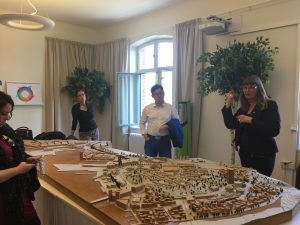
Smart Means Sustainable
“Cities can provide a good environment in which people can live well without wasting the earth’s resources.” This statement on Sweden’s smart city approach emphasizes an important point – in Sweden being smart is about being sustainable.
I repeatedly heard the term “eco-governance”, which emphasizes sustainability and “creates a common ground for all before staring planning in each silo”. There is significant attention and time committed to planning and process. From this initial investment, they move forward in collaboration, acknowledging that the challenges are complex.
The early work is paying off. In 2010, the European Commission recognized Stockholm as the first green capital of Europe. Since 1990, the city has reduced green house gas emissions by 25 percent, and since 2012 the city has reduced energy use by 11 percent. The goal is to be free of fossil fuels by 2050.
The Grow Smarter initiative shares Sweden’s success beyond the national boarder to include Cologne and Barcelona. Three Lighthouse Cities are deploying 12 Smart Solutions to address three pillars of sustainability: economic, social and environmental. This is a part of the European Commission’s smart cities and communities effort under the Horizon 2020 funding stream.
How Sweden Executes a Smart City Vision
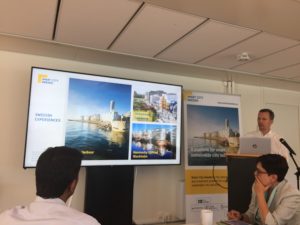
Smart City Sweden, the national export and investment platform for smart and sustainable city solutions, works closely with government and industry to realize this broader vision. The organization is literally and physically embedded in the ethos of sustainability. They are located in Hammarby Sjöstad, one of the world’s most famous sustainable city developments.
Hammarby Sjöstad
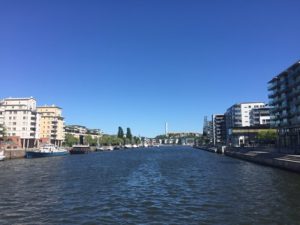

The system is enabled by connected technology that focuses on sensors, monitoring activity in real time. The data aid visualization so residents can see the results of their actions and therefore, adjust for maximum sustainable outcomes acknowledging “if you can see it, you can change it.” Again, the “why” is prioritized and tech is the enabler.
Stockholm Royal Seaport

Building methods and materials are designed to reduce greenhouse gases by 60 percent. Ninety-five percent of materials collected are reused. Buildings are nearly Zero-Energy Buildings (nZEBs) and produce renewable energy in the form of solar. They implement a vacuum waste collection system that literally “sucks” sorted trash from compost-able to recyclable into a centralized system. There are 77 electric vehicle charge points in nearby garages. From energy usage to wastewater, every attempt is focused on conservation and re-use.

Again, the emphasis is on inclusion. The care taken toward resident surveys is prioritized and not an afterthought. They even extend this to The Sustainable Kids’ Forum to encourage dialogue with children. Messaging promotes, “influence and getting involved” and the importance of early-stage cooperation to innovation.
eGovlab
Inclusive governance is a natural and frequent part of the national dialogue. The epicenter of this practice is eGovLab which deploys “unconventional research frameworks and methods to visualize the impact of ICT on government transformation towards inclusion, transparency, efficiency and change management.”
eGovlab projects focus on solutions related to mobile inclusiveness, democracy and smart communities. The teams include a wide range from engineers and developers to anthropologists. Are you beginning to see a theme?
Urban IC Arena
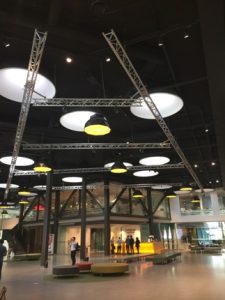
“There is more money to be saved and made when things are connected.”
In Sweden, digital inclusion is an imperative. Their goal is broadband access for 95 percent of all households and businesses at a minimum capacity of 100 mb/s, by 2020. It is seen as a key factor for the nation’s success.
Petra Dalunde, COO for the Urban ICT Arena at the Kista Science City describes this effort as “15 percent digitalization and 85 percent mindset.” She is leading 5G and IoT innovation efforts through an open test bed for the largest Information and Communication Technology (ICT) cluster in Europe and the third largest ICT cluster in the world that combines the industry, academia and public sectors.
This effort that began in 1986, sparked by Ericcson and political leadership, and resulted in the Electrum Foundation. Today there are 1,200 ICT companies, 6500 students and a team of people dedicated to “making things better.”
And they are doing it via a Global 5G Proof of Concept (PoC) Network, which enables users from academia, industry, operators and other partners to explore innovation on a 5G network. Early stage is welcome. “The idea is to be as open as possible and by emphasizing the scenarios and use cases – encourage diversity and flexibility in the collaborations.”
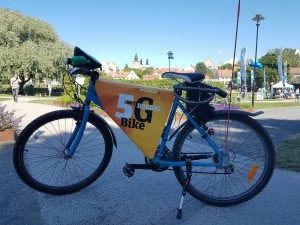
Conclusion
Sweden is a world leader in how to approach and execute smart city programs. What they are doing is impressive, but how they do it garners even more adoration. They prioritize digitization, modernization and innovation, but always with the spirit of inclusion, acknowledging the “borders must be bridged.”
I’ve repeatedly lauded smart city success stories from China, Singapore and other top-down governments that set a grand vision and execute flush with capital. Sweden accomplishes similar outcomes with a Western approach is perhaps easier for U.S. stakeholders to identify with and hopefully emulate.
And I know what you’re thinking…Sweden’s economic model must be so different and the tax rate must be through the roof. However, following broad-sweeping national reforms, the corporate tax rate is 22 percent (lower than the United States). And the individual tax rate is applied broadly across the population with ROI of national healthcare, education and other human-focused benefits. For a more comprehensive overview of their taxation approach, click here.
Stockholm and Sweden have much to teach the world and we would be wise to study their approach. Throughout the week, I found myself constantly nodding in agreement and wondering, “why can’t everyone think this way?” Stockholm has taken the theory of human-centered smart city development and put it to work. It is possible and so let’s begin.


